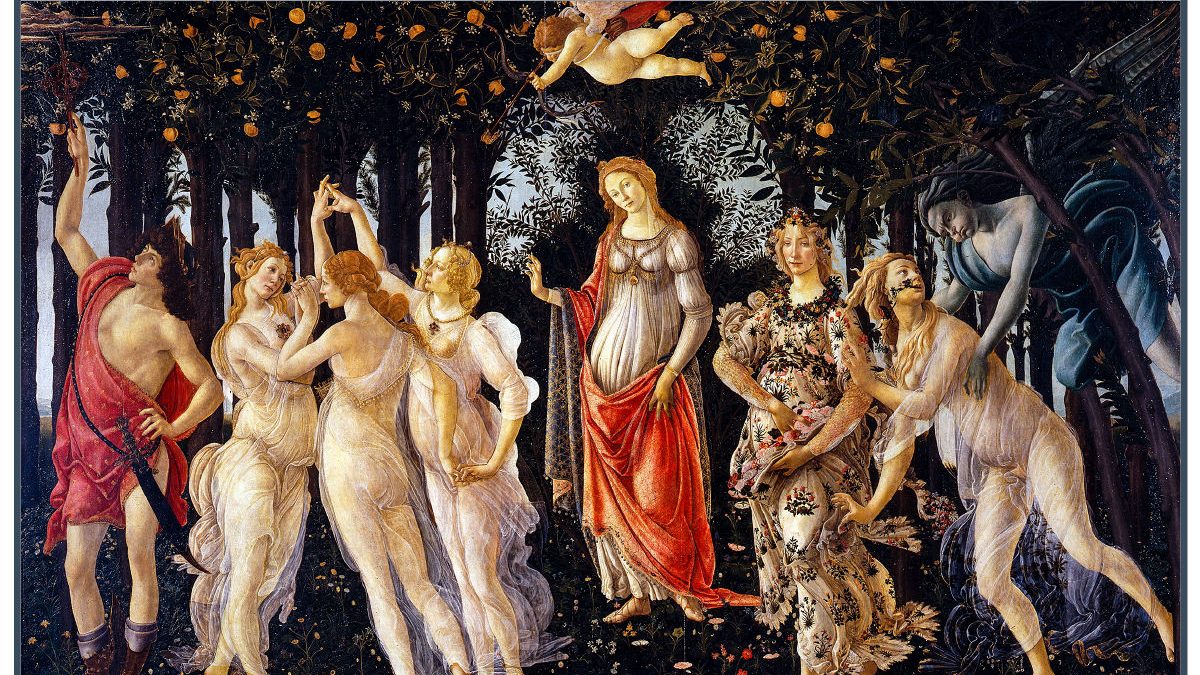
The beautiful women of Botticelli

Sandro Botticelli was born in Florence in 1445. According to Giorgio Vasari he was a pupil of Andrea del Verrocchio, together with the younger Leonardo.
He was considered the most representative painter of the intellectual climate of the Laurentian age and he himself started his own workshop in the mid-seventies, joining soon the circle of the Medici’s favorite painters.
Botticelli’s works are the result of the progressive search for a form as pure as possible and ideal beauty, rendered through drawing. Her figures are surrounded by a supple and elegant line, capable of softly defining them, especially in the delicate female anatomies.
The ideal beauty of Venus and Spring
In the “Birth of Venus“, the mythological theme hides an allegory based on the concept of love as the driving force of nature. The most refined forms delineate the statuary nude of the goddess, in which the moral and spiritual qualities coincide with her physical beauty. Naked Venus, standing on a shell, warmed by the fecundating breath of Zephyr, lands on a beach where one of the Hours is about to cover her with an embroidered cloak.

The same style, philosophical references and format are shared in the “Primavera“, the representation of an ideal paradise inhabited by an eternally young and beautiful humanity, immersed in nature and in harmony with the universe.

Botticelli painted the personification of fifteenth-century beauty in several works. The aesthetic canons of that time were a high forehead, a well-defined chin, pale skin, blond hair, a strong nose and a narrow, fleshy mouth. The body always has pronounced shapes, rounded abdomen and hips. All women were looking for this model on their body, in an attempt to still represent a spiritual and pure beauty like that of Venus.
The beautiful Simonetta
It seems that every female figure designed by Botticelli was Simonetta Vespucci, the noblewoman who loved Giuliano De’ Medici, at that time considered by society to be a living Venus for her unparalleled beauty.


Portrait of Simonetta Vespucci as Cleopatra
The “beautiful Simonetta”, the “sans par” is one of the most famous noblewomen of the Florentine Renaissance. There are many artists of the time for whom he would have posed.
Many wanted to recognize his face in Venus or in the personification of Spring by Sandro Botticelli. Indeed, the legend also speaks of an emotional bond between them.
There are very few documents about Simonetta, but her myth, after her death at a very young age, certainly spread among the poets and artists at that time in Florence, who saw in her the personification of the concept of beauty.

